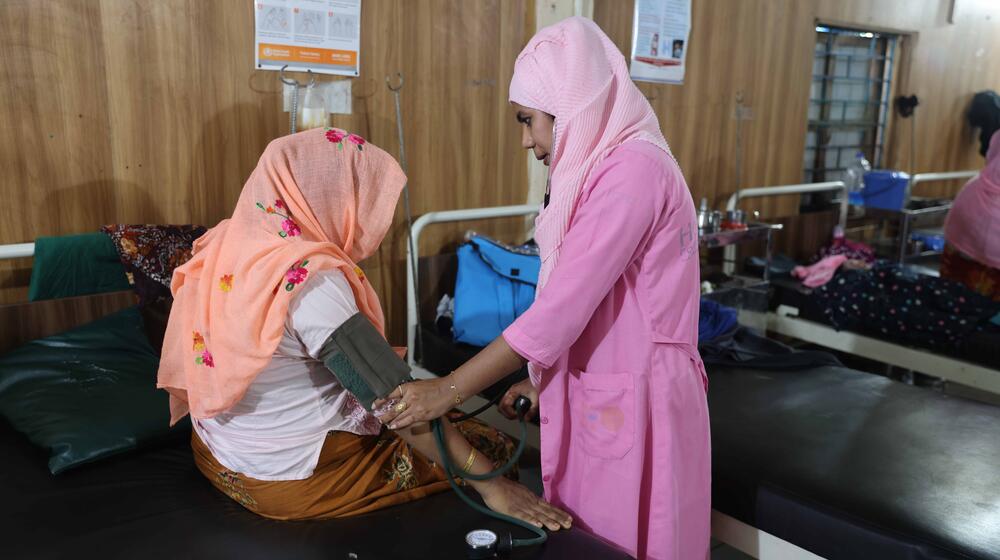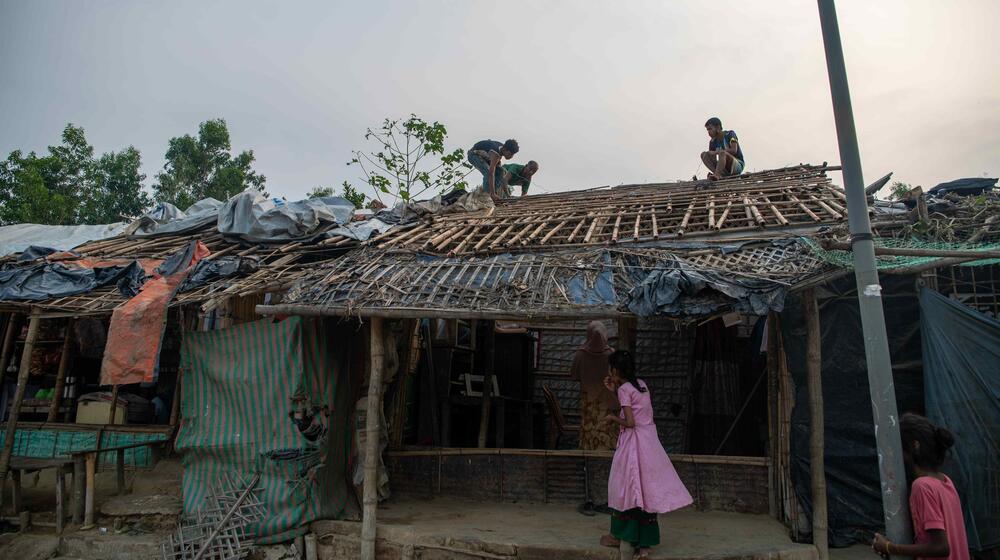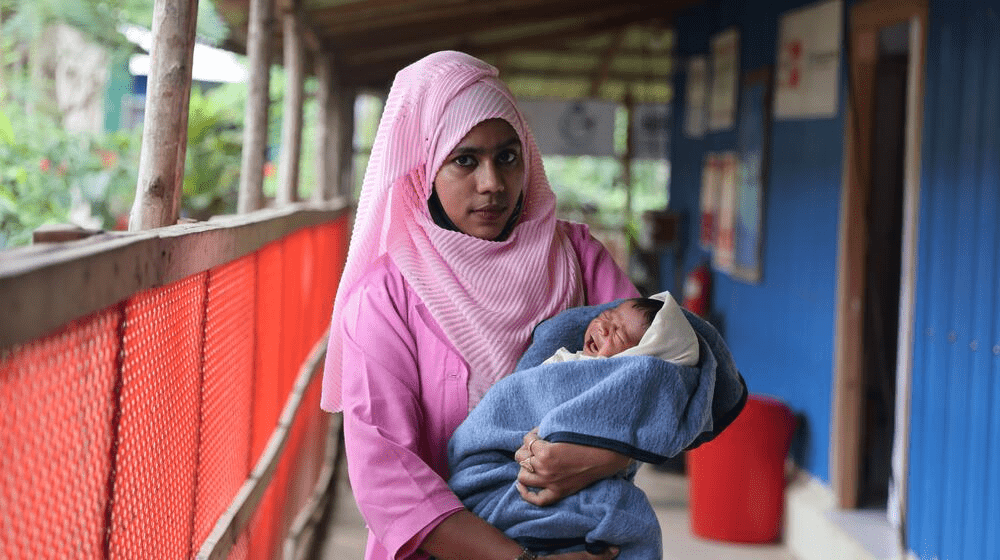COX’S BAZAR, Bangladesh – Khadija*, 21, lives in a displacement camp for Rohingya refugees in Cox’s Bazar, Bangladesh. A trained midwife, she knew all too well the danger she could face as she went into labour at home on 14 May – just as Cyclone Mocha made its destructive landfall along the coast beside the camp.
The powerful storm brought gales and torrential rain that caused widespread flooding and multiple landslides across the district. Some 2.3 million people were affected, including over 960,000 Rohingya refugees in Cox’s Bazar – people who are already impoverished, marginalized and highly vulnerable. Health centres, safe spaces for women and girls, and thousands of homes have been damaged or destroyed entirely – as the monsoon season threatens to bring yet more rain.
Khadija urgently needed help, but a trained birth attendant couldn't reach her due to the floods, and the nearest health centres had been forced to close. Her family finally managed to call an ambulance, funded by UNFPA and operated by a local partner RTMi, which swiftly transported her to the UNFPA-supported HOPE field hospital – where Khadija also works.

Nasrin Khatun, 27, was one of the midwives on duty that day. She explained that Khadija’s blood pressure was too high – a condition that can be life-threatening during childbirth – and that complications had developed following the attempted home delivery.
Working quickly to resolve the situation, they helped her to safely deliver a healthy baby boy – but their relief was short lived. The new mother soon started bleeding profusely; she was suffering a post-partum haemorrhage that, without the intervention of skilled midwives, could have ended in severe illness or death.
“She held my hand and thanked me with a full heart,” said Ms Khatun. “This is the kind of moment that inspires me more about my profession.”
The perils of pregnancy
With almost 1 million displaced people, Cox’s Bazar hosts the largest refugee camp in the world in a country that is prone to climate disasters. Refugees and host communities in Cox’s Bazar are beset by increasingly frequent floods, cyclones and landslides, with many losing their lives, loved ones and homes to crises like Cyclone Mocha.
Now back home safely with her newborn, Khadija has continued to receive postnatal care and advice from the hospital, as well as immunization shots for her son. Despite Bangladesh significantly reducing its maternal mortality rate over the past two decades, a lack of trained birth attendants and midwives in crisis settings means pregnancy and childbirth can all too often prove fatal, as access to health centres, shelter, food and water is severely hampered.
Ms Khatun told UNFPA, “My elder sister had two miscarriages before her third child, [because of] a lack of an expert midwife in the health facility. I don't want any mother to suffer such a thing in their precious moment – that's why I aimed to become a midwife.”
The HOPE hospital was established in the refugee camp in 2018 to meet the sexual and reproductive health needs of displaced Rohingya women and girls fleeing violence and persecution in Myanmar. Since the centre began operating, UNFPA estimates it has served more than 58,000 women and girls.
In 2022 almost 300 midwives were deployed to Rohingya refugee camps in Bangladesh; in Cox's Bazaar alone, more than 240,000 women from both refugee and host communities had access to sexual and reproductive health services thanks to UNFPA-supported facilities.

Supporting women and girls across the board in Bangladesh
The needs of displaced women and girls and those left behind in crisis settings extend beyond urgent maternal health requirements, however. They are also increasingly exposed to gender-based violence, trafficking and sexual abuse – especially as social support and protection systems break down.
This is certainly the case in Khadija’s camp: Overcrowded, flimsy shelters offer little privacy or safety, and the latest disaster has put an estimated 15,000 women and girls at even greater risk of violence, sexual exploitation and abuse: As people lose their homes and social networks, life stressors multiply and women and children are less able to travel even short distances to reach the few remaining protection and response services.
In Cox’s Bazar, UNFPA runs a network of 54 women-friendly spaces that offer gender-based violence prevention and response services and referrals – four of the spaces even provided emergency shelter during the cyclone.
Together with the Government of Australia and the Government of Bangladesh, UNFPA is committed to ensuring that women and girls from even the most remote areas of the country have access to sexual and reproductive health services, especially as the ravages of climate change exact such a heavy toll on their lives.
*Name changed for privacy and protection


